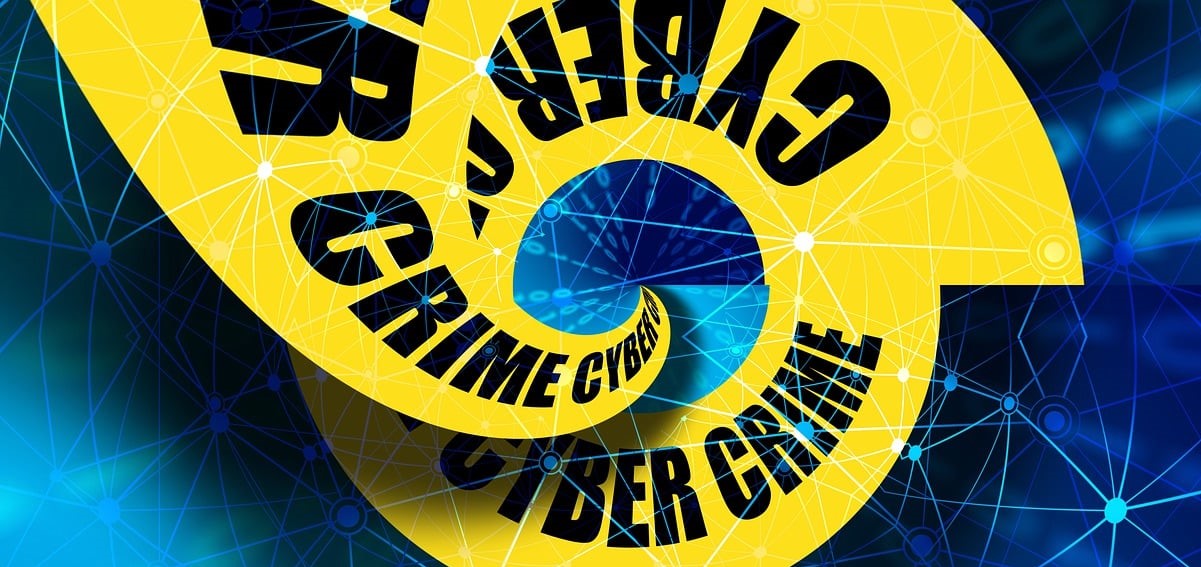Unraveling the Dark Web of Cybercrime Investigations
The world of cybercrime holds a mysterious attraction, and digital forensics is the key to unlocking its secrets. In today’s interconnected world, cybercrimes and cybercrime investigations are found everywhere. But what is Cybercrime?
In this article, we will explore the world of cybercrime and the essential role of cybercrime investigations in combatting them. So, fasten your digital seatbelts as we embark on this enlightening journey into the heart of cybercrime investigations.
Cybercrime Investigations: A Glimpse into the Digital Realm
Cybercrimes are unlawful activities conducted in the digital sphere. Think of them as crimes that happen on your computer, smartphone, or any internet-connected device. Hacking, stealing personal information, and spreading viruses are all examples of cybercrimes.
Cybercrime investigations, on the other hand, are the efforts to uncover and solve these digital crimes. It’s like being a digital detective, trying to catch the culprits who operate behind the screens.
Cybercrime Investigations: The Importance of Digital Forensics
Now that we’ve unraveled the basics of cybercrime investigations, let’s dive deeper into one of the critical tools in this digital forensic battle:
Digital forensics is like the superpower that helps investigators uncover digital clues, just like Sherlock Holmes used magnifying glasses and deductive reasoning. However, instead of a pipe-smoking detective, it’s done by experts with cutting-edge technology and specialized skills.
In simple terms, digital forensics is the process of looking through digital devices, files, and networks to find evidence related to cybercrime. Therefore, it’s like searching for fingerprints at a crime scene but in the digital world.
Imagine a world without digital forensics. Cybercriminals could operate with impunity, leaving no traces behind. But thanks to this vital field, investigators can track down the bad actors, secure evidence, and bring them to justice.
Moreover, think of it as a digital guardian, protecting us from the shadows of the internet. Digital forensics helps us catch the culprits, prevent future crimes, and keep our digital lives safe.
Finally, as we journey further into the realm of cybercrime investigations, keep in mind the importance of digital forensics. It’s the flashlight that guides investigators through the dark web, shedding light on the truth and ensuring that the digital world remains a safer place for all. So, let’s move forward and explore how digital forensics is put into action.
Cybercrime Investigations and its Diverse Forms
Now that we’ve understood the critical role of digital forensics, let’s turn our attention to the diverse and ever-evolving forms of cybercrime that digital investigators confront.
Cybercrime is like a chameleon, constantly changing its colors and tactics. It’s not just one huge organization; it takes on various shapes and forms, each posing unique challenges for investigators. Here are some of the most prevalent types:
Hacking: Think of hackers as the digital burglars of the cyber world. They break into systems, steal information, and cause havoc. Investigating hacking incidents requires understanding the methods used and tracing back to the intruder’s digital footsteps.
Identity Theft: Imagine someone pretending to be you online, wreaking havoc in your name. Identity theft is a widespread cybercrime where personal information is stolen and misused. Investigators must uncover the identity thieves and help victims regain control of their digital lives.
Phishing: Phishing is like fishing for information using deceitful bait. Cybercriminals send fake emails or messages to trick people into revealing sensitive data. Detecting phishing attempts and tracking down the perpetrators is a crucial part of cybercrime investigations.
Malware Attacks: Malware is malicious software designed to harm or infiltrate computer systems. Investigating malware incidents involves identifying the type of malware, understanding its behavior, and finding out how it entered the system.
Understanding these diverse forms of cybercrime is like deciphering a digital puzzle. Each type leaves behind unique clues and challenges. Investigators must adapt, learning the ever-changing tactics used by cybercriminals and staying one step ahead in the game. As we proceed, we’ll uncover the crucial role of digital evidence in piecing together the cybercrime puzzle and bringing the culprits to justice.

Cybercrime Investigations: The World of Digital Evidence
In our journey through the digital landscape of cybercrime investigations, we’ve encountered various forms of digital malice. Now, let’s shine a light on the critical element that ties it all together:
Digital evidence is the digital equivalent of fingerprints, DNA, or footprints at a physical crime scene. It’s the breadcrumbs left behind by cybercriminals in the vast expanse of the digital world. Understanding digital evidence and how to collect, preserve, and interpret it is at the heart of effective cybercrime investigations.
Imagine a cybercriminal sending an incriminating email, leaving a trail of digital footprints behind. Or picture a hacker trying to cover their tracks by encrypting stolen data. Digital evidence can be found in emails, chat logs, social media interactions, encrypted files, and more. It’s a treasure trove of clues waiting to be discovered.
But uncovering this treasure isn’t as simple as it might seem. Investigating digital evidence requires specialized skills and tools. It’s akin to being a digital archaeologist, carefully excavating and preserving artifacts from the digital past.
Digital forensics experts use sophisticated software and techniques to extract data from devices, analyze it, and present it in a court of law. They must be meticulous in their work, ensuring that the evidence remains untainted and admissible in legal proceedings.
Think of digital evidence as the thread that weaves together the story of cybercrime investigations. It’s the key to understanding how an attack unfolded, who was behind it, and what their motivations were.

Cybercrime Investigations: Techniques in Digital Forensics
These techniques are the gears and levers that empower investigators to decipher the secrets hidden within digital evidence.
Data Acquisition: This is like casting a wide net to gather digital evidence. Investigators use specialized tools to make a digital copy of a suspect’s device without altering the original data. It’s akin to creating a snapshot in time, preserving every bit and byte for analysis.
Analysis: Imagine a detective piecing together a jigsaw puzzle. In digital forensics, analysts examine the acquired data, searching for patterns, anomalies, and clues. They look for timestamps, file metadata, and communication logs to reconstruct the events leading to a cybercrime.
Steganography: Cybercriminals sometimes hide messages or data within innocent-looking files. Steganography is the art of uncovering these hidden treasures. It’s like finding a secret compartment in a bookshelf, revealing information that was intentionally concealed.
Cryptography: Criminals often encrypt their data to prevent prying eyes from deciphering it. Cryptanalysts in digital forensics use their expertise to break these codes, ensuring that no digital stone is left unturned in the investigation.
Forensic Software and Tools: Digital investigators have an arsenal of specialized software and tools at their disposal. These tools help them sift through mountains of data, recover deleted files, and analyze network traffic. They’re like the detective’s magnifying glass, enhancing their ability to spot crucial evidence.
Chain of Custody: Just like in a physical crime scene, maintaining a clear chain of custody is crucial in digital forensics. This ensures that the evidence is tamper-proof and admissible in court. It’s like labeling and preserving physical evidence at a crime scene.
Mastering these techniques is akin to becoming a digital Sherlock Holmes. It’s about having the skills and knowledge to navigate the complicated world of digital evidence, uncovering hidden truths, and building a rock-solid case against cyber criminals.
The Impact of Cybercrime on Society
In our exploration of cybercrime and digital forensics, it’s crucial to understand that the repercussions of cybercrime reach far beyond the digital world. Cyberattacks have tangible and often severe consequences for individuals, businesses, and even governments.
Financial Losses: Just as a bank heist can devastate a community, cybercriminals can drain bank accounts, steal credit card information, and perpetrate online fraud. Individuals can lose their hard-earned savings, while businesses can face crippling financial losses. Digital forensics is essential in tracking down these criminals and recovering stolen funds.
Reputation Damage: Imagine if your good name and reputation were tarnished due to a cyberattack. Businesses and individuals alike can suffer reputational harm when their digital security is breached. Restoring trust and credibility often requires thorough cybercrime investigations to identify the culprits and mitigate the damage.
Compromised Information: Personal and sensitive data, such as medical records, social security numbers, and intellectual property, can be exposed through cyberattacks. This not only threatens individuals’ privacy but also jeopardizes national security. Digital forensics plays a pivotal role in preventing such data breaches and responding effectively when they occur.
Disruption of Services: Cyberattacks can disrupt essential services such as healthcare, transportation, and utilities. Imagine hospitals unable to access patient records or power grids being shut down. Investigating these attacks is not just about identifying the suspects; it’s about safeguarding society’s critical infrastructure.
Psychological Impact: Victims of cybercrimes can experience emotional distress and anxiety. The fear of identity theft or the violation of privacy can have a lasting impact on an individual’s mental well-being. Digital forensics helps bring closure to victims by holding cybercriminals accountable.
Digital forensics professionals are the digital defenders, working tirelessly to ensure that the digital world remains a safe and secure place for all. As we progress through this exploration, we’ll encounter the challenges faced by these investigators and the collaborative efforts required to combat cybercriminals effectively.
Challenges in Cybercrime Investigations
Now that we’ve grasped the impact of cybercrime on society, let’s get into the challenges faced by those on the frontlines of cybercrime investigations. Investigating cybercrimes is no walk in the park; it’s more like navigating a complex maze with unexpected twists and turns.
Anonymity: Cybercriminals often operate under the cloak of anonymity. They use aliases, VPNs, and encrypted communication to conceal their identities. This anonymity makes it challenging for investigators to track them down.
Global Nature: Cybercrimes know no borders. Criminals can launch attacks from anywhere in the world, making it difficult for law enforcement agencies to coordinate and collaborate across jurisdictions.
Evolution of Tactics: Just as detectives adapt to new crime trends, cybercriminals continually evolve their tactics. They develop new malware, phishing schemes, and hacking methods. Investigators must stay ahead by constantly updating their skills and knowledge.
Vast Amounts of Data: The digital realm generates massive amounts of data. Investigating a single cybercrime can involve sifting through terabytes of information. This data overload can overwhelm investigators if not managed effectively.
Legal and Ethical Challenges: Digital investigators must navigate complex legal frameworks and ethical considerations. Ensuring that evidence is collected legally and preserving individuals’ rights is a delicate balance.
Resource Limitations: Many law enforcement agencies and organizations lack the resources and personnel required for comprehensive cybercrime investigations. This resource gap can hinder the pursuit of cybercriminals.
To overcome these challenges, collaboration is paramount. Law enforcement agencies, private sector organizations, and cybersecurity experts must work together, pooling their expertise and resources. This united front strengthens the fight against cybercriminals and increases the chances of successful investigations.
Moreover, staying informed and adapting to the ever-changing landscape of cybercrime is essential. Digital investigators must be agile and ready to tackle new challenges as they arise.
Protecting Yourself from Phishing Scams
As we explore the topics of cybercrime investigations and digital forensics, we want to make sure you have the skills to protect yourself from one of the most common cybercrimes: phishing scams. Phishing is a type of online fraud where cybercriminals pretend to be trustworthy sources to trick people into giving up sensitive information or doing harmful things.
Recognizing Phishing Emails
Check the Sender’s Email Address: Examine the sender’s email address closely. Cybercriminals often use email addresses that mimic legitimate sources but contain small variations or misspellings.
Look for Generic Greetings: Phishing emails often use generic greetings like “Dear Customer” instead of your name. Legitimate organizations usually personalize their communications.
Beware of Urgency or Threats: Phishing emails often create a sense of urgency or threat to manipulate recipients. They might claim your account will be suspended or that you’ve won a prize.
Verify Hyperlinks: Hover your mouse over links in the email without clicking on them. Check if the URL matches the legitimate website of the supposed sender. Be cautious of misspelled or altered URLs.
Watch for Spelling and Grammar Errors: Phishing emails often contain spelling and grammar mistakes. Legitimate organizations typically maintain professional communication.
Examine Attachments: Be cautious of email attachments, especially if they’re from unknown senders. Malicious attachments can contain malware.
How to Report Phishing
If you receive a suspicious email, it’s crucial to report it to the appropriate authorities:
Forward the Email: Send the suspicious email to the Anti-Phishing Working Group at reportphishing@apwg.org. Most email providers also have a built-in option to report phishing.
Contact the Legitimate Source: If you suspect an email is from a legitimate organization but seems fishy, contact the organization directly through their official website or customer service to verify the email’s authenticity.
Notify Your Employer: If you receive a phishing email at work, inform your IT department or employer immediately. They can take steps to protect the organization.
Protecting Yourself
Use Strong, Unique Passwords: Create strong, unique passwords for your online accounts, and consider using a password manager to keep them secure.
Enable Multi-Factor Authentication (MFA): MFA adds an extra layer of security by requiring you to verify your identity through another method, such as a text message or authentication app.
Stay Informed: Keep up with the latest phishing tactics and scams. Awareness is your first line of defense.
Install Security Software: Use reputable antivirus and anti-malware software to protect your devices.
Educate Yourself: Learn more about phishing and cybersecurity best practices to stay vigilant.
By recognizing phishing emails, reporting them, and taking proactive steps to protect yourself, you can reduce the risk of falling victim to these scams and help make the digital world a safer place for all.
Conclusion: Safeguarding the Digital Frontier
In our journey through this article on cybercrime investigations, we’ve uncovered the significance of this digital battle. Cybercrime, with its diverse forms and far-reaching consequences, poses a persistent threat to individuals, organizations, and society at large.
Digital forensics, the beacon guiding investigators through the digital darkness, plays a pivotal role in mitigating this threat. It’s the art of uncovering digital evidence, understanding the techniques employed by cybercriminals, and piecing together the intricate puzzle of cybercrimes.
However, the challenges in this field are not to be underestimated. Cybercriminals lurk in the shadows exploiting the global nature of the digital realm. The rapid evolution of cybercrime tactics and the overwhelming volume of digital data present intimidating obstacles.
Yet, despite these challenges, the commitment of digital investigators remains unwavering. They are the guardians of the digital frontier, working diligently to protect us from the perils of the cyberworld.
In this digital age, staying informed and adaptable is crucial. Cybercrime never sleeps, and neither should those dedicated to combating it. Continuous learning and skill development keep investigators ahead of the curve.
Therefore, whenever you use your smartphone, send an email, or click a link, remember that there are silent protectors who are willing to shield you from the invisible threats of the cyber world.
I appreciate your interest in this article and I welcome your feedback and inquiries. If you want to learn more about interviews and interrogation techniques, please click here.
To read my comprehensive product reviews for 2023 visit my other website.
Willie MCCain






